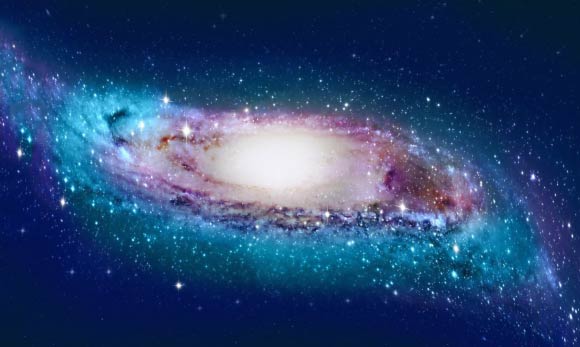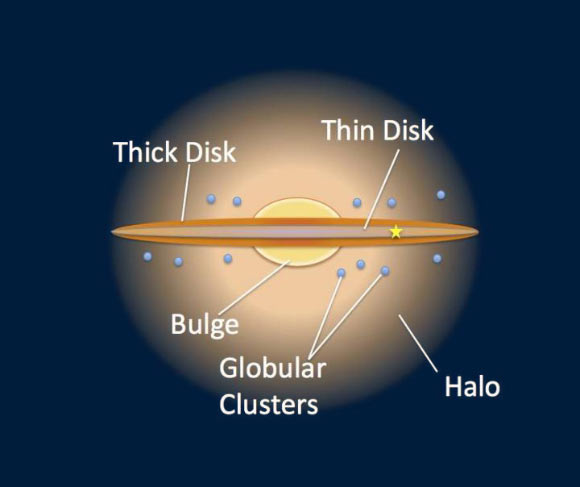Milky Way’s Thick Disk is 10 Billion Years Old, Astronomers Say | Astronomy – Sci-News.com
Our Milky Way Galaxy consists of two disk-like structures, known as ‘thick’ and ‘thin’ disks. The thick disk contains only about 20% of the Galaxy’s total stars, and, based on its vertical puffiness and composition, is thought to be the older of the pair. Using data from NASA’s Kepler space telescope, astronomers have calculated that the thick disk is about 10 billion years old.

From a great distance, our Milky Way Galaxy would look like a thin disk of stars that orbits once every few hundred million years around its central region, where hundreds of billions of stars provide the gravitational ‘glue’ to hold it all together. But this pull of gravity is much weaker in the Galaxy’s far outer disk. There, the hydrogen atoms making up most of the Milky Way’s gas disk are no longer confined to a thin plane, instead they give the disk an S-like, or warped, appearance. Image credit: Xiaodian Chen.
“This finding clears up a mystery,” said lead author Dr. Sanjib Sharma, an astronomer at the ARC Centre of Excellence for All Sky Astrophysics in Three Dimensions (ASTRO-3D) and the University of Sydney.
“Earlier data about the age distribution of stars in the disk didn’t agree with the models constructed to describe it, but no one knew where the error lay — in the data or the models. Now we’re pretty sure we’ve found it.”
Dr. Sharma and colleagues used a method known as asteroseismology, a way of identifying the internal structures of stars by measuring their oscillations from star quakes.
“The quakes generate soundwaves inside the stars that make them ring, or vibrate,” explained Dr. Dennis Stello, from ASTRO-3D and the University of New South Wales.
“The frequencies produced tell us things about the stars’ internal properties, including their age. It’s a bit like identifying a violin as a Stradivarius by listening to the sound it makes.”

An artist’s impression of the Milky Way Galaxy, showing the thick and thin disks. Image credit: NASA / JPL Caltech / R.Hurt / SSC.
This age-dating allows the researchers to essentially look back in time and discern the period in the Universe’s history when the Milky Way formed — a practice known as galactic archaeology.
Not that they actually hear the sound generated by star-quakes. Instead, they look for how the internal movement is reflected in changes to brightness.
“Stars are just spherical instruments full of gas, but their vibrations are tiny, so we have to look very carefully,” Dr. Sharma said.
“The exquisite brightness measurements made by Kepler were ideal for that. The telescope was so sensitive it would have been able to detect the dimming of a car headlight as a flea walked across it.”
The data delivered by Kepler during the four years after it was launched in 2009 presented a problem for astronomers.
The information suggested there were more younger stars in the thick disk than models predicted.
The question confronting scientists was stark: were the models wrong, or was the data incomplete?
A fresh spectroscopic analysis revealed that the chemical composition incorporated in the existing models for stars in the thick disk was wrong, which affected the prediction of their ages.
Taking this into account, the researchers found that the observed asteroseismic data now fell into ‘excellent agreement’ with model predictions.
“The results provide a strong indirect verification of the analytical power of asteroseismology to estimate ages,” Dr. Stello said.
The results are published in the Monthly Notices of the Royal Astronomical Society.
_____
Sanjib Sharma et al. 2019. The K2-HERMES Survey: age and metallicity of the thick disc. MNRAS 490 (4): 5335-5352; doi: 10.1093/mnras/stz2861






